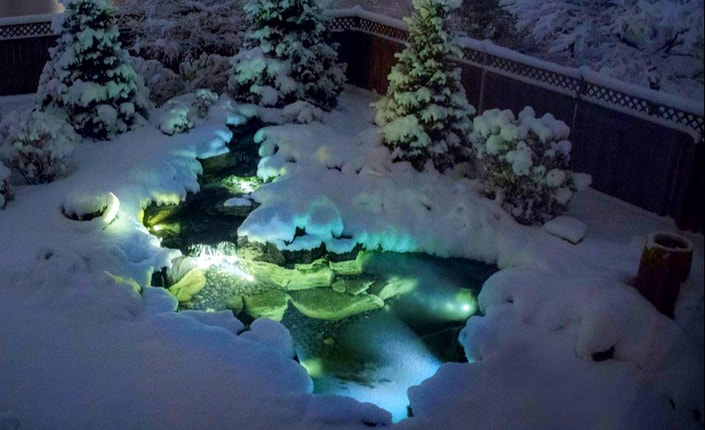
How to Prepare Your New Jersey Pond for Winter Care
Winterizing your pond in New Jersey is essential to keep it beautiful and healthy through cold months. Freezing temperatures, ice, and snow can stress your pond’s ecosystem, damage equipment, and affect fish health if not handled correctly. Here’s your guide to New Jersey winter pond care, from debris removal to deicers and aeration tips to keep your pond in pristine condition.
Step 1: Clear Out Leaves and Debris
Before temperatures drop, give your pond a thorough clean by removing leaves, twigs, and other debris. If organic matter is left in the water, it will decompose over winter, affecting water quality and creating sludge that can harm your pond’s ecosystem.
Pro Tip:
Install a leaf net over your pond in the fall to keep debris out, reducing your workload and keeping the water clear. New Jersey’s autumn leaves are beautiful, but they can accumulate quickly, so this simple tool can be a big help!
Step 2: Protect Your Pumps and Equipment
Pumps are the heart of your pond, and winter can be tough on them without proper care. Depending on whether you’ll run your pond during winter, here’s what to do:
- Remove and Store the Pump: For smaller ponds or those you won’t be running, take the pump out and store it in a frost-free area to prevent freezing damage.
- Install a Deicer: If you plan to keep the pond running, a deicer is essential. It keeps a small portion of the pond ice-free, allowing water flow and protecting your pump from freezing damage.
- Use an Aerator: Aeration prevents the pond surface from completely freezing over, allowing oxygen to circulate and supporting fish health. It’s especially helpful in larger ponds where fish rely on oxygen levels for hibernation.
Pond Thermometer Tip: Use a pond thermometer to keep an eye on water temperature. When it consistently dips below freezing, activate your aerator or deicer for optimal protection.
Step 3: Winterize Waterfalls and Fountains
For ponds with waterfalls and fountains, ice buildup can lead to cracks and pump issues. To prevent this:
- Reduce Water Flow: Lowering the flow rate when temperatures drop helps prevent ice dams and reduces strain on equipment.
- Add a Pond Heater: If you want to keep water features running through winter, a pond heater or deicer can prevent freezing and reduce ice buildup that may damage the waterfall or fountain.
New Jersey Winter Hack: If you choose to keep your waterfall or fountain running, keep a close eye on it during freezing temperatures. Quick responses to ice buildup can save you costly repairs!
Step 4: Prepare Fish and Aquatic Plants
Ponds with fish need special care during winter. Fish enter a semi-hibernative state as temperatures drop, and they need oxygenated water to survive.
- Fish Care: Aerators maintain a small, ice-free opening for gas exchange, preventing toxic gases from building up under the ice.
- Aquatic Plants: Bring tropical plants indoors, as they won’t survive the cold. Trim hardy plants back to an inch above the soil to prepare them for dormancy, ensuring they return healthy in spring.
Conclusion
With these New Jersey winter pond care steps, you’ll protect your pond’s ecosystem, equipment, and aesthetic appeal all winter long. By removing debris, safeguarding pumps, using deicers and aerators, and tending to fish and plants, you can enjoy a healthy, vibrant pond when spring arrives.
Need help with your pond’s winter prep? Contact us at 973-627-0515 for professional winter pond care in New Jersey!
For more content with tips, tricks and amazing water feature goodness, check us out on YouTube! We’re also on TikTok, Instagram and Facebook